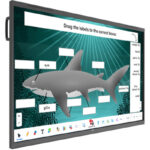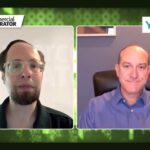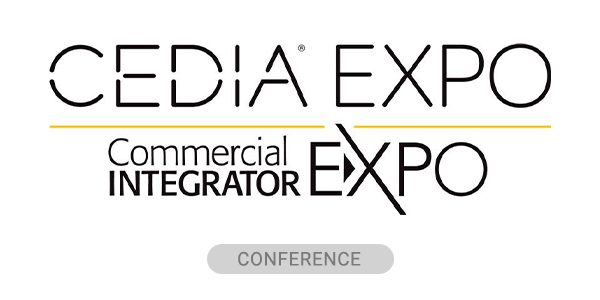Once again, CI+SSI has gathered a group of members of The ASCII Group for a roundtable discussion on business best practices and operational efficiency. The ASCII Group, founded in 1984, is, of course, the original IT community of the channel, uniting managed service providers (MSPs) across North America. This time, we focus on frameworks for running a business, such as the Entrepreneurial Operating System (EOS). We ask this group of MSPs whether they follow EOS (or any other framework), what processes they’ve put in place within their own organization and how, if at all, their process-driven approach has enriched their client relationships and bolstered their profitability.
Here, in Part 1 of a two-part series, we present thoughts from the following ASCII Group members: Tim Singleton, president, Strive Technology Consulting; Mat Kordell, co-founder and COO, CyberStreams; Christopher Barber, chief nerd, Cheaper Than a Geek; and Dawn Sizer, CEO, 3rd Element Consulting.
Commercial Integrator: What kind of framework, if any, do you run your business in accordance with? Do you leverage the Entrepreneurial Operating System (EOS) or any other defined system to be sure your company has a strong internal foundation?
Tim Singleton, president, Strive Technology Consulting
Singleton: We use the “Scaling Up” methodology, created by Verne Harnish (formerly called “Rockefeller Habits”). We are also part of a coaching program and accountability group specifically designed to train and guide business owners of world-class IT companies.
Mat Kordell, co-founder and COO, CyberStreams
Kordell: We do use EOS within our business. We’re not purists to the program, but we find the books and language make it easy to get people onboard and up to speed and keep us on the same page as we operate, so that we don’t have to spend time clarifying semantics. We utilize the Traction and What the Heck Is EOS? books most (for existing and new employees, respectively), referencing them regularly. And we utilize Rocket Fuel, Get a Grip and How to Be a Great Boss, within their specific use cases, to continue to drive the business and its leadership to new levels. There’s no magic here, though. Don’t expect to get anything from these that you didn’t learn on some level in your MBA program. These resources really just provide the context from which to teach our management style, without having to create the standards and trainings ourselves from scratch. And there is plenty of content and in-person training opportunity for employees who need to go deeper on a concept.
Christopher Barber, chief nerd, Cheaper Than a Geek
Barber: At Cheaper Than a Geek, we utilize a customized blend of frameworks tailored to our specific needs as an MSP. While we’ve incorporated elements of EOS to streamline leadership alignment and goal setting, we’ve also always been huge fans of Standard Operating Procedure documents to maintain high standards in service delivery. This hybrid approach ensures that we have a strong operational foundation, fostering both business growth and exceptional customer service.
Dawn Sizer, CEO, 3rd Element Consulting
Sizer: 3rd Element has been using EOS, or Traction, for a number of years. It took us about two years to really get it implemented completely through the business and have everyone onboard with it. What we found was that certain functions were easy to implement, whereas others were more difficult. Adding in Strety to be able to track progress and have all employees able to access the software made it easier for everyone to adopt.
Commercial Integrator: Describe some of the processes that you’ve put into place in your business to be sure your decision-making is not ad-hoc. What accountability structures do you have in place to be sure those processes are followed?
Singleton: First is mission and core values. All business decisions should be aligned with those. Second is annual and quarterly business planning. This keeps us on track — not pulled away by the nearest shiny object. Third is decision processes, such as metrics that determine when we need to hire, or our comprehensive vendor research process to ensure we aren’t overlooking important needs.
Kordell: When implementing changes internally or at clients, we utilize the change management process, which includes a Teams message to the whole company notifying everyone of the impending change. This allows for anyone who may not have been consulted to gain awareness and, if needed, speak up before the change occurs.
Barber: To avoid ad-hoc decision-making, we’ve established a formalized decision-making process anchored by key performance indicators (KPIs) and data-driven insights. For example:
Quarterly Strategy Meetings: Our leadership team gathers quarterly to evaluate progress, address challenges and set actionable goals for the upcoming quarter.
Standard Operating Procedures: Every critical function in our business — from onboarding clients to responding to IT emergencies — is governed by documented and repeatable processes.
Accountability Checks: We leverage tools like Asana and Microsoft Teams to assign, track and review tasks, ensuring transparency and accountability across the team. Regular one-on-one check-ins reinforce adherence to processes.
Sizer: EOS requires that you create processes around all the major aspects of the business. One of them is meetings, and, in turn, decision-making processes. A Level 10 meeting in EOS requires that, if there is an issue, you identify it, discuss it and solve it. That becomes the basis for any decision we are making as a group. If it’s not meeting-based and a tech needs to make a decision in the moment, the rule is always this: Is it the right thing for the client? Can it be undone? Have you communicated the issues to the client and what you’re proposing to do? Is it under $100? If the answers are yes, then the tech has the ability to do the right thing in the moment.
Commercial Integrator: Give a concrete example of how being a process-driven company has improved your success, driven greater profits or strengthened client relationships.
Singleton: Our entire service delivery is based on a process of aligning our clients’ environment with our 300-plus technology standards and best practices. Every time we go into a client and begin this continuous alignment process, the number of IT support requests goes down measurably. This means their businesses run more efficiently and profitably, and we can accurately predict the level of support they will need, thus making our staffing more efficient and our business more profitable.
Kordell: When we took on a very large client, we struggled with over-expending resources and issue/task prioritization. Implementing a weekly L10-style meeting for that specific team helped us correct the issues by presenting the KPIs to the team on a regular basis and providing an opportunity for the team to prioritize tasks and share situational awareness. With this shared perspective, everyone is able to collaborate as a team to make this client successful. This client is now stabilized and being successfully managed.
Barber: A prime example of our process-driven approach is our customer onboarding system. By documenting every step — from initial assessment to system configuration and end-user training — we’ve significantly reduced onboarding times, while ensuring consistent outcomes. Recently, this enabled us to onboard a client with quite a few employees within two weeks, achieving minimal downtime. The process not only impressed the client but also reduced stress for our team, proving that having well-defined, repeatable workflows leads to both client satisfaction and operational efficiency.
Sizer: EOS gives business owners and leadership teams a way to set, track and measure quarterly rocks. All the rocks that are set in the company should be supporting the end game for the organization. It doesn’t matter if it’s growth, revenue, a success metric or bettering client relationships. Whatever the end goal is, your company rocks, department/team rocks and even personal rocks to an extent will further that mission. By setting a stretch revenue goal each year and creating rocks that support it, we’ve hit our stretch goals every year for the last three years.
Editor’s Note: In the coming weeks, we will present Part 2 in this series, featuring comments from Randy M. Carbone, partner, E3 IT Services, and Angel R. Rojas, Jr., president and CEO, DataCorps Technology Solutions, Inc. To read more content from The ASCII Group, check out our web archives.










